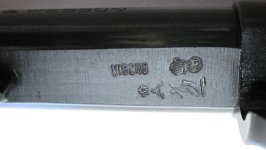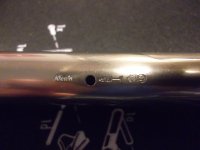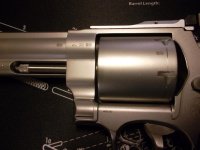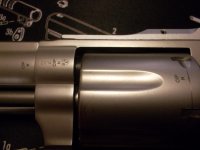mister_sam
Member
- Joined
- Dec 9, 2013
- Messages
- 8
- Reaction score
- 26
As requested by Kernel Crittenden in another thread:
Bought a 686-6 today in Belgium. Kernel Crittenden told me the gun was shipped in February 2015. He asked me to show him the European proof marks.
I do not have the gun in my possession yet, have it on lay-away until I receive a permit for it (very straight-forward procedure, if you are a law abiding citizen like me). So I now only have one picture of it.
I hope this detail of the picture helps, not sure if this is what is asked for. When i have the gun (give or take 3 months from now), I will post full detail pictures of the three proof marks.
Full picture:

Detail:

You can clearly see the letters CIP, this refers to "Commission Internationale Permanente pour l'Epreuve des Armes à Feu Portatives" or "Permanent International Commission for the Proof of Small Arms", more info on Wikipedia
Below CIP you can see the letter N, which means it's a normal proofing, meaning it's for normal loads.
Below you see a shield with the letters B E L, this is the official stamp of het proof bank of Belgium, located in Luik (Liège in French, since its in the French speaking part of Belgium.
Logo:

http://www.cip-bobp.org/poincons shows you more information about the proof marks of other countries that are in the CIP.
So, to end my story, there is no standard European proof mark. Only the above mentioned member states use the CIP proof marks. A quick search on proof marks for Holland (Nederland) was negative. A Dutch forum member could enlighten us...
Hope I wrote this down in understandable English. Questions? Shoot! ... in a safe direction ;-)
Bought a 686-6 today in Belgium. Kernel Crittenden told me the gun was shipped in February 2015. He asked me to show him the European proof marks.
I do not have the gun in my possession yet, have it on lay-away until I receive a permit for it (very straight-forward procedure, if you are a law abiding citizen like me). So I now only have one picture of it.
I hope this detail of the picture helps, not sure if this is what is asked for. When i have the gun (give or take 3 months from now), I will post full detail pictures of the three proof marks.
Full picture:

Detail:

You can clearly see the letters CIP, this refers to "Commission Internationale Permanente pour l'Epreuve des Armes à Feu Portatives" or "Permanent International Commission for the Proof of Small Arms", more info on Wikipedia
Below CIP you can see the letter N, which means it's a normal proofing, meaning it's for normal loads.
Below you see a shield with the letters B E L, this is the official stamp of het proof bank of Belgium, located in Luik (Liège in French, since its in the French speaking part of Belgium.
Logo:

http://www.cip-bobp.org/poincons shows you more information about the proof marks of other countries that are in the CIP.
So, to end my story, there is no standard European proof mark. Only the above mentioned member states use the CIP proof marks. A quick search on proof marks for Holland (Nederland) was negative. A Dutch forum member could enlighten us...
Hope I wrote this down in understandable English. Questions? Shoot! ... in a safe direction ;-)
Last edited:








